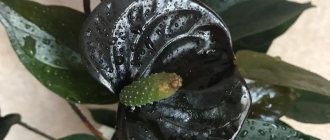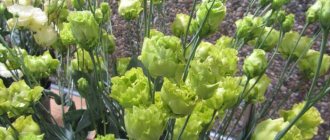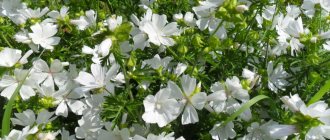Possible colors
In nature, there are 30 thousand colors of orchids. They come in one-color, two-color, with patterns, all the colors of the rainbow. However, scientists do not stop at this and continue to develop new varieties of phalaenopsis.
In room conditions
At home, all colors of orchids are found. Plants are:
- white;
- light pink;
- purple;
- blue;
- black;
- red;
- radiant;
- pistachio;
- Crayola;
- raspberry;
- burgundy;
- orange.
Hybrids and natural varieties of phalaenopsis take root in indoor conditions.
In the natural environment
Thanks to natural pollination, orchid flowers can be unpredictable in natural conditions. Of course, you won’t be able to find a black or bright blue flower. This is the work of scientists. In nature there are the following shades:
- white;
- pink;
- purple;
- yellow;
- orange;
- light pink;
- peach;
- light purple;
- pistachio
After spontaneous crossing, two-colored petals with a pattern are obtained. Such phalaenopsis are more often found in the wild.
Artificially bred varieties
The variety of orchids is enormous. Below are the most unusual and beautiful hybrid species:
- Wanda Rothschld;
- Cymbidium swordifolium;
- Cattleya Ekland;
- Miltonia flava;
- Phalaenopsis Sander;
- Dendrobium Mix;
- Royal Blue;
- Blue Mystick;
- Cymbidium Black Ruby;
- Phalaenopsis Black Butterfly.
All these varieties have unusual shades that are not found in natural conditions. Blue and black colors do not exist because the plant lacks the pigment to produce such blooms.
Modern scientists have been able to develop such varieties, but after the first flowering the flowers lose their unusual color and become a different color, usually white.
Important! Japanese scientists were able to breed a blue orchid, but it is not yet commercially available.
What kind of flowers are these?
Definition
The lilac orchid is known as "violation" . Scientific name: Phalaenopsis violation.
The main feature of the species is its lilac flowers, with shade variations from light lilac to deep purple; it is also called the purple orchid. Flowers are entirely one color or with:
- interspersed;
- dots;
- stripes;
- spots.
Description of appearance
Unlike other types of orchids, a small number of flowers appear on lilac . The maximum width of the flower is 6 cm. The petals are oblong, oval in shape, their surface is smooth, waxy. Lilac orchid flowers have a pleasant, pronounced aroma - the smell is similar to:
- freesia;
- bergamot;
- the smell of water lilies.
The plant blooms all year round, with peak flowering from spring to autumn.
The leaves of the orchid are elongated, elliptical in shape, large, fleshy . In an adult plant, the length of the leaves can reach 30 cm and the width - 15 cm.
Unusual colors
In nature, orchids have different shades and colors. Many plants are painted in 2-3 colors at the same time. This occurs as a result of crossing.
Blue, black and cyan pigmentation in nature
Blue and black pigmentation of petals does not occur naturally. They are bred by scientists in laboratory conditions. Such a plant is able to maintain its color during just 1 flowering, which lasts 8-12 months. New flower stalks will have a different color.
Step-by-step instruction
Care
The conditions for keeping the lilac orchid must meet the following requirements:
- The room temperature should be between 15 and 25C.
- There are 12 hours of daylight; in the cold season, the deficiency is compensated for by artificial lighting. You should also protect it from direct sunlight.
- The room should be ventilated, but avoid drafts.
- Air humidity is on average 40% -60%.
- Watering is carried out after the substrate has completely dried.
Important! Dry walls of the pot and light gray roots indicate the need for watering. - To avoid rotting of the flower, you should refrain from frequent and abundant watering, spraying, and high air humidity.
- Substrate composition: bark, moss, charcoal.
By feeding
Lilac orchids should be fed no more than once a month . For this purpose, nitrogen, phosphorus and potassium fertilizers are used. This promotes prolonged flowering, active budding and increased foliage growth.
Watch a video about feeding an orchid:
By transfer
The lilac orchid is replanted every 3 years. During this time, the substrate loses its beneficial properties. Also, replanting is necessary when the pot for the plant becomes small.
It is recommended to replant the flower in early spring before the period of active growth. You should not replant an orchid that has released a flower arrow , as this will slow down the growth of the peduncle and shed flower buds.
- You should carefully remove the plants from the pot, removing soil from the roots.
- Cut off dry and rotten roots.
- Remove dry leaves - cut the leaf in half and pull it in different directions, thus removing it from the stem.
- Dry the roots for 6-8 hours.
- Place the flower in a dry pot with drainage and cover with substrate.
All detailed information about orchid transplantation can be found in this video:
By reproduction
Artificial methods of propagation of orchids include the following:
- Dividing the rhizome. Usually the division occurs independently by the plant, but you can divide the rhizome manually:
- Remove the flower from the pot and clean the roots from the substrate.
- Cut the rhizome completely between the false bulbs.
- To disinfect, sprinkle the roots with charcoal.
- Plant the resulting plants in separate containers.
- Upper cuttings. This propagation method is suitable if the areas of the shoots are located at a considerable distance:
- Cut off the shoot at the height of half the cutting.
- Disinfect the cut with charcoal.
- Plant the cuttings in a separate container.
- Side shoots. The grown side shoot should be sprayed. When it forms roots:
- Separate the escape.
- Disinfect the cut.
- Plant the orchid in a separate pot.
- Seed method . This method is rarely used, since the orchid has small seeds that do not have nutritious tissue. In this case, the orchid grows from a sprout into an adult plant after about 3 years, and begins to bloom after 10 years.
A detailed description of all methods of orchid propagation in this video:
Reproduction by dividing the rosette
If the bush is large enough and healthy, then the rosette division method is used. A few days before the procedure, you should stop watering and dry the plant. The presence of aerial roots plays an important role. Therefore, the bush needs to be cut with pruning shears so that there are 5-6 pieces left on the top part. If there are fewer roots, the plant will not absorb enough nutrients and will die. This is also due to the fact that most of the greenery is at the top. On the underside there are 4 leaves and a powerful root system. The sections should be powdered with coal ash or simply dried. The plant must be carefully examined and bad roots removed with pruners. After dividing and planting the bushes in the summer, the yellow orchid is watered after 3-4 days.
Orchid size
Orchids differ not only in color and variety, but also in size. It is safe to choose a medium flower size. Moreover, if you are not sure whether the person has previously encountered growing an orchid. For lovers of home flowers and plant breeders, you can opt for a small orchid. A miniature orchid will add variety to the housewife's flower garden because it looks original. Traditionally, orchids are sold in a tall, transparent plastic pot of various colors. The orchid grows in height and stretches upward, so a vertical planter should be installed in the pot to ensure stability. The size of the pot is selected exactly to the size of the plant’s roots; they do not need excessive freedom.
Bloom
The flowering of white-purple varieties of orchids is no fundamentally different from the flowering of orchids of other colors. The season and frequency depend on the type of exotic and its requirements for light, humidity, and temperature. The most unpretentious of all is Phalaenopsis.
A valuable feature of this exotic beauty is its long flowering . Opened buds can retain their fresh appearance for a month, or even longer. In addition, new flowers open to replace the fading calyxes on the peduncle.
With proper care, the orchid will bloom regularly. True, if a pot with a plant is placed on a south or south-east window, the color of the flowers, as well as the leaves, may become paler. Only Cattleya will enjoy the bright sun; all other varieties should be shaded .
Experienced gardeners can further stimulate the formation of new flower stalks by manipulating the watering and lighting regime. To artificially induce flowering , a period of dry maintenance is organized with a sharp, approximately half, reduction in watering.
After about a month or two, when flower stalks appear, they begin to apply fertilizer . First, they contain nitrogen, and when buds appear, they contain potassium. A lack of nutrients also does not allow the plant to fully display its full standard color.
What can you ask the seller?
In order to increase revenue, salespeople in indoor plant stores are usually willing to advise customers on the flower they have chosen. This also applies, of course, to orchids. When choosing such an indoor flower, you should ask the seller a few questions:
- what is the exact name of the orchid;
- what is its origin - the conditions to which it is accustomed in nature;
- what is the cyclicity of a flower;
- Is it a terrestrial orchid or an epiphytic one.
It is also worth asking about the conditions under which the purchased orchid blooms.
Found a violation? Report content
Hybrids
Botany is full of surprises.
One of the pleasant discoveries was the easy crossing of different types of phalaenopsis with each other, in which previously unknown shapes and shades of colors appear.
Industrial cultivation and sale dictates its own rules.
Absolutely identical ideal plants on a store shelf are most likely clones of a successful hybrid.
When crossing different types of phalaenopsis, such beautiful hybrids are obtained.
Biologists are striving to obtain new combinations of specks, unusual petal shapes and contrast with the lip.
Thousands of orchid hybrids can be described in the form of an encyclopedia in several volumes rather than within the confines of a single article.
Groups are distinguished by size and type of flowering.
Miniature
Flowers are not for a bouquet, but to take home, look after and care for, that’s what mini phalaenopsis is.
Here comes Mini Mark.
Before the creation of this group of hybrids, orchids were most often cut for bouquets.
A plant that is small in size and height is easier to maintain. Fragile flowers do not lose their grace and evoke tenderness.
Taiwanese
Bright, large, even provocative tropical flowers, unlike the first hybrids of porcelain-flat flowers.
A play of nature that imitates the work of a calligraphy master, but in reality it is the painstaking work of botanists.
Taiwan Phalaenopsis 'Red Cat'.
Of course, they are unpretentious to indoor growing conditions, because their creators took care of this.
This direction of orchid hybridization is rapidly developing. New color options for orchid petals are appearing.
Very popular are the species in which the corolla of petals and the lip are painted in contrasting shades.
Botanists have managed to achieve previously inaccessible golden-yellow, peach, and orange phalaenopsis flowers, and something new appears every day.
Novelty
A group of hybrids distinguished by flowering type.
Attention! A remarkable distinctive property is that after flowering ends, the flower stalks go into a dormant period, and then new buds grow from the apical bud and flowering continues. This process can be repeated several times. The flower brush is very compact, raised above the rosette of leaves.
The flower raceme is very compact, raised above the rosette of leaves.
Taiwan Novelty Phalaenopsis.
At the same time, the plant produces two or more flower stalks.
This group of hybrids contains all the variety of colors developed over the years of work by biologists.
Blots, strokes, dashes and other food for imagination on dense petals of the correct shape.
Number of peduncles
When choosing a plant in a flower shop, buyers involuntarily pay attention to orchids strewn with open flower stalks. I would like it to bring joy at home with its abundant flowering. It is important to understand that an orchid spends a lot of energy on flowering, which depletes it and leads to death. After all, it is difficult to determine the duration of a flower’s presence on a store window. There is a chance to buy an adult plant that is blooming for the last time. But even too young orchids give an abundance of flower stalks not immediately after planting, but several years later. When choosing a flower as a gift, buy one that is in bloom but also has closed buds. It is desirable that the number of buds on the plant be greater than the number of open flowers.
The orchid is a symbol of grace and luxury. Any woman wants to become the owner of this delicate and original flower.
- Author: iarriba
Rate this article:
- 5
- 4
- 3
- 2
- 1
(1 vote, average: 5 out of 5)
Share with your friends!










